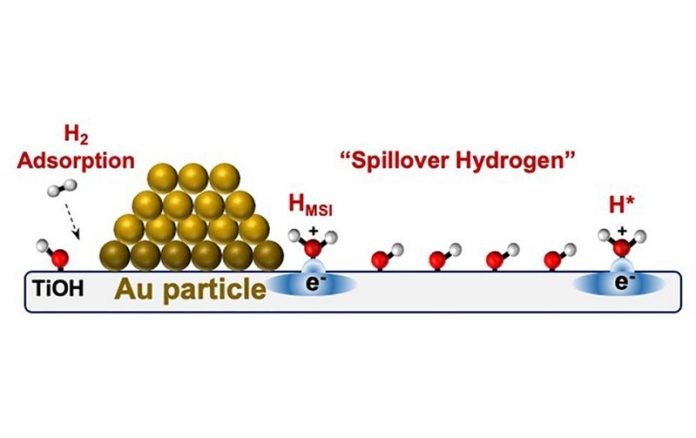
Have you ever heard of hydrogen spillover?
If you’re interested in clean energy, this term may be crucial for you.
Hydrogen is a gas that can serve as a clean fuel, but it’s been tough to use it practically for that purpose.
Scientists at Penn State University may have just figured out how to make hydrogen a more convenient and effective fuel source.
To understand this, let’s go back to what hydrogen spillover is. In simple terms, it’s like when you spill a drink and it flows from one surface to another.
Here, tiny pieces of metal act as a catalyst, helping hydrogen “spill” onto another material.
For decades, researchers have known that this happens but couldn’t explain why or measure it properly. Now, thanks to a team led by Professor Bert Chandler, we have answers.
The team found a way to measure and understand hydrogen spillover by using gold attached to a material called titanium oxide. This is a big deal because understanding spillover can help us store hydrogen better.
Right now, storing hydrogen is tricky; it needs to be kept super cold, which uses a lot of energy. If we can master spillover, we may be able to store hydrogen more easily and use it to power everything from cars to homes.
Why did they use gold and titanium oxide? Well, gold acts in a unique way with hydrogen, and it allows scientists to get a clear measurement of how much hydrogen spills over. In other words, gold made it easier to see what was actually happening.
What the researchers found was surprising. They realized that it’s not heat that makes hydrogen spill over, but something called entropy, which is a measure of disorder or randomness. To put it simply, the hydrogen atoms felt more “comfortable” spilling over due to natural randomness, rather than being forced by heat. This is a game-changer because it challenges what experts thought they knew.
Now, the team plans to look at other materials that could make storing hydrogen even easier and more effective.
This could lead to better clean energy options in the future. This work didn’t happen overnight; it took six years of careful research. And it wasn’t funded by just anybody; organizations like the Department of Energy and the National Science Foundation supported this groundbreaking work.
So why does all this matter to you? Well, hydrogen has the potential to be a clean fuel that could reduce our reliance on fossil fuels, which are bad for the planet.
This Penn State research moves us a step closer to making hydrogen a practical, everyday fuel. Plus, it shows us how science can keep improving and correcting itself over time.
It’s not just about having new facts; it’s about understanding how the world works in ways we didn’t before.
And sometimes, that understanding can open doors to a better, cleaner future.
The study was published in Nature Catalysis.
Follow us on Twitter for more articles about this topic.
Source: Penn State.



